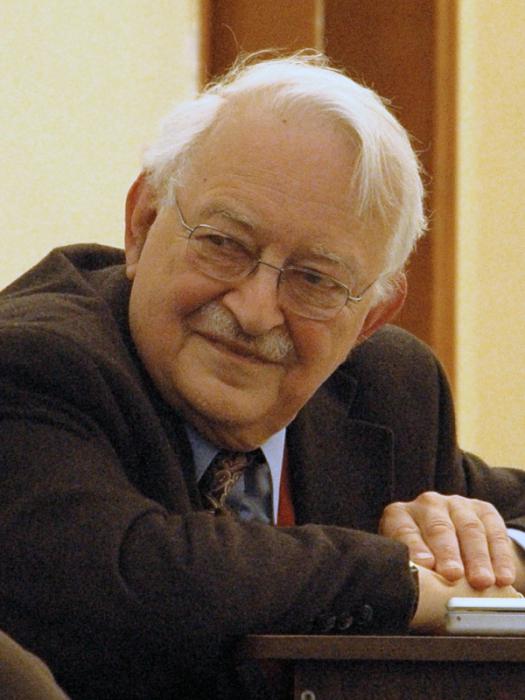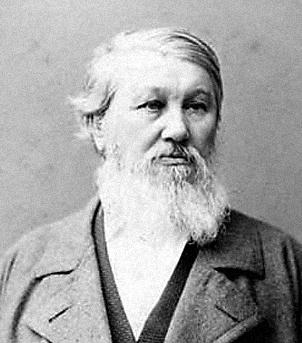What are the stages in the development of a society? Before answering this question, we note that its socio-historical development is a multilateral, extremely complex process. It takes place over a rather long period of history and involves political, legal, economic, intellectual, spiritual and moral, and many other components that form some integrity. Many scientists have tried to give their answer to the question of what stages in the development of society goes through. In this article, we will consider the basic theories and classifications proposed by well-known researchers on this issue.
The specifics of the sociological study of the historical development of society
A sociological study of this concept is not easy, firstly, because it is difficult to single out the social aspect itself. Moreover, it is not easy to determine the content of the concept of "social development" in the course of the historical process. And all this must be done in order to answer the question: "What are the stages in the development of a society?" Researchers usually focus on the socio-historical development of a certain social subject. It can be an individual person, a certain society (for example, Russian), as well as a group of societies (Latin American, European), a nation, a social group, a social institution (family, education system), social organization. It can also be combinations of them (national economic enterprises, political parties, commercial and industrial companies). However, we are only interested in the question of what stages in its development the society as a whole goes through.
Civilization and the type of society
The greatest interest in sociology is the socio-historical development of societies as integral social units. Of course, it consists of the development of individual classes, social groups, institutions, organizations, communities. However, at each stage of its socio-historical development, one or another society is a whole, for the analysis and description of which various concepts are usually used. They can be combined into two groups - "civilization" and "type of society." These concepts characterize quality conditions at various stages of socio-historical development. They need to be defined in order to answer the question: "What are the stages of society in its development?"
The concept of "type of society"
This concept refers to a system of structural units (institutions, social groups, communities, etc.) that interact with each other and are interconnected on the basis of certain social ideals, norms, values, common to them.
There are various classifications of types of societies. The most elementary is their division into complex and simple. Herbert Spencer proposed it back in the 19th century .
Spencer Classification
Answering the question about what stages a society goes through in its development, this scientist put forward the opinion that societies change over time from a state of so-called indefinite homogeneity to the opposite - a certain heterogeneity, with an increase in the integration and differentiation of personality, social ties, and culture. We immediately note that this division is very arbitrary. After all, even the simplest society is a very complex organism. Even less obvious is the fact that the primitive communal system of society is organized much more simply than, for example, the developed modern one. Therefore, Spencer's classification is very inaccurate.
Division of society into industrial and traditional
However, Spencer was not the only one who answered the question: "What are the stages of society in its development?" One of the most common classifications today is the division into industrial and traditional formulated by O. Comte, K. A. Saint-Simon, E. Durkheim and other sociologists. Usually the concept of "traditional society" is used to designate stages of development that are pre-capitalist. That is, the totality of people at this time does not yet have a developed industrial complex. It is based largely on the agricultural economy. Such a society is inactive in social terms. From generation to generation, traditional patterns of behavior and forms of life are transmitted almost unchanged. The result of industrialization is an industrial society. It breeds urbanization, mass literacy, and professional specialization. Such a society relies mainly on the industrial economy. It has developed a system of social-class and industrial division of labor. It is dynamic, characterized by constant technological and scientific and technological innovations and inventions, and a high level of mobility.
Wallerstein Historical Systems

There are other opinions about what stages in the development of a society goes through. A brief answer to this question, based on the opinion of one of the leading Western sociologists of our time, I. Wallerstein, can be given as follows. This scientist considers it necessary to highlight historical systems. Each of these systems is based on some type of division of labor. She develops various institutions (sociocultural, political, economic), which ultimately determine the implementation of the basic principles of this system, the socialization of groups and individuals. Wallerstein claims that various kinds of historical systems can be discovered. One of them is the capitalist world economy (modern) that has existed for about 500-600 years. The other is the Roman Empire. The third was the Mayan structures in Central America. There are a huge number of small historical systems. From the point of view of this researcher, a real change in society occurs when the transition from one historical system to another begins. Moreover, it is not the action of various internal contradictions that determines its disappearance. The inefficiency of the way of functioning opens the way to other, more perfect ways.
The identification of different types of societies allows researchers from different points of view, from different positions and in different aspects to study socio-historical development and consider it as a multifaceted process, with many indicators and signs.
The main socio-historical types of societies
If we summarize the above and other opinions of sociologists, as well as philosophers, economists and historians, we can briefly outline the following socio-historical types (stages of development of human society) in a schematic form:
- existing through the collection of gifts of nature and hunting communities of hunters and gatherers;
- agricultural societies engaged in the artificial cultivation of plants and tillage;
- cattle-breeding based on breeding of different types of domestic animals;
- based mainly on handicraft and agricultural production, traditional (it is in them that private property, cities, state power, classes, trade, writing arise);
- based mainly on industrial machine production, industrial societies;
- replacing industrial postindustrial.
In the latter, as many authors note, the production becomes not only the production of various physical goods, but also information, knowledge, and the service sector.
In general, this typology, which describes the main stages of the development of society, is widely accepted by representatives of the humanities and social sciences of various countries. It is often used to build more specialized and detailed concepts of socio-historical development.
The concept of "civilization"
In sociology, social philosophy, and cultural studies, the types of cultural and social structure of societies are also distinguished using the concept of "civilization." However, if the type of society primarily emphasizes the nature of social ties, relationships and structures, then civilization as a concept focuses on the spiritual, socio-cultural, religious characteristics of various societies.
Cultural-historical type
The term proposed in the 19th century by N. Ya. Danilevsky, a Russian sociologist and philosopher ("cultural-historical type") is also close to this concept. This researcher, among the first thinkers, tried to get away from the generally accepted image of socio-historical development only as a linear, flat process. He believed that peoples form cultural-historical types that differ significantly from each other. He considered the main criteria for distinguishing types of "affinity of language", territorial, religious, psycho-ethnographic unity, political independence, forms of economic activity, as well as some other signs. Danilevsky (pictured below) classified Assyro-Babylonian, Chinese, Egyptian, Iranian, Indian, Greek, Jewish, Arabian, Roman, European (German-Roman) among these types.

Each of them goes through its developmental stages of the life cycle, such as nucleation, development, flowering, decline. After this, a new cultural-historical type is brought to the forefront of the development of the history of our planet. According to Danilevsky, the formation of Slavic civilization has been going on for several centuries. It is he who characterizes the current stage of development of society. He predicted a great future for Slavic civilization. Danilevsky’s concept, despite political conservatism and a number of theoretical naiveties, is valuable in that it provides a non-linear image of the historical development of society. It assumes the existence of historical deviations, zigzags, even a significant destruction of previously accumulated cultural values.
Opinion A. Toynbee
Later, the idea of cyclic development was continued in the works of O. Spengler, the German philosopher, and especially A. Toynbee, the English historian. According to Toynbee, every civilization (and in the history of mankind it counted 21 civilizations, including 13 major ones) goes through a closed life cycle in its development . It moves from generation to death and decay. Toynbee identified 5 major civilizations: Russian, Western, Islamic, Indian and Chinese. He paid particular attention to the reasons why civilizations perish. Toynbee, in particular, believed that the bearer of the life force of a particular culture, its “creative elite,” at some point was unable to solve the emerging historical and socio-economic problems. It turns into a minority alienated from the population, which dominates it not by the right of authority, but by the right of strong power. Ultimately, the researcher believes, these processes will destroy civilization.
Now you know what stages a society goes through in its economic development according to A. Toynbee.
The concept of civilization in domestic sociology
In domestic sociology (as well as in the humanities and social sciences as a whole) in recent years, the concept of civilization has become more widespread, when it is necessary to characterize socio-historical development. This is mainly due to the fact that the Marxist concept, which reigned supreme in Soviet social studies, according to which socio-economic formations exist in history, was rejected by most social scientists as simplified and excessively politicized. The concept of civilization is currently used in the domestic scientific literature in three main meanings:
- the stage of sociocultural development of society following barbarism;
- sociocultural type (Russian, European, Chinese, Japanese and other civilizations);
- as the highest level of technological, socio-economic, political and cultural development today.
Back in school, we first get acquainted with what stages in the development of a society goes through. Grade 8 is the time to study this issue. However, at school this topic is rather superficial. This article gave a detailed answer to the question of what stages a society goes through. It can be used not only by schoolchildren, but also students to prepare for classes and exams.